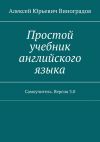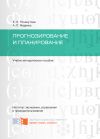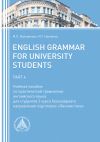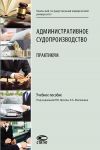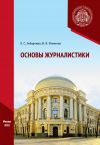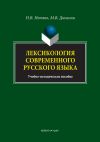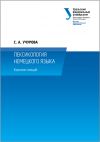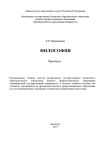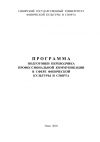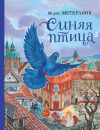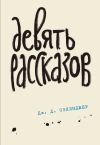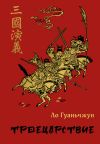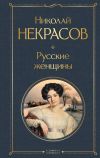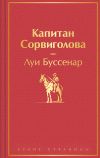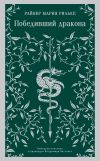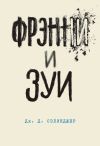Текст книги "Лексикология современного английского языка"
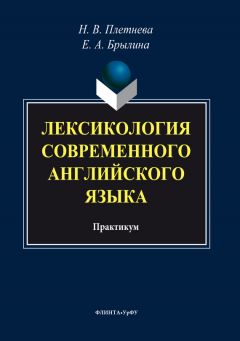
Автор книги: Коллектив авторов
Жанр: Прочая образовательная литература, Наука и Образование
сообщить о неприемлемом содержимом
Текущая страница: 2 (всего у книги 4 страниц)
Seminar 3
Synonyms and antonyms
Task 1. In the following groups of synonyms, find the synonymic dominant. Give reasons for your choice.
1. Exact, precise, accurate.
2. Savage, uncivilised, barbarous.
3. Hide, conceal, disguise.
4. Agree, approve, consent.
5. Recall, recollect.
6. Cry, weep, scream, shriek.
7. Lazy, indolent, idle, vain.
8. Clever, able, intelligent, keen, sharp.
9. Ignorant, illiterate, uneducated, misinformed.
10. Agile, nimble, alert, quick, brisk, active.
Task 2. State whether the marked word is a synonymic dominant or a general term.
1. Victory, triumph, conquest.
2. Complain, grumble, mutter.
3. Sound, clatter, creak, bang, cluck.
4. Fragrance, scent, perfume, odour, smell.
5. Olive, pink, brown, colour, pea-green, rose.
6. Scarlet, crimson, cherry, red, purple.
7. Mathematics, arithmetic, algebra, geometry, trigonometry.
8. Footwear, shoes, rubbers, slippers, felt-boots.
9. Hound, borzoi, dog, colly.
10. Courage, bravery, valour, fortitude.
Task 3. Find in the following list of words synonymic series and classify them into three groups: a) synonyms which display an obvious semantic difference (ideographic synonyms); b) synonyms which display an obvious stylistic difference (stylistic synonyms); c) synonyms more or less equally displaying both differences.
Ailing, arrogant, battle, begin, behold, bicker, brawl, bright, callous, clever, commence, conflict, conquest, consume, cruel, defeat, devour, diseased, dispiteous, dumb, easy, eat, engorge, facile, fatuous, fight, food, grub, hard-boiled, haughty, high-hat, hoity-toity, horse, ill, inept, ingest, intelligent, light, mandicate, obdurate, pace, proud, quarrel, sagacious, see, shrewd, snobbish, snooty, squabble, steed, stride, stroll, stupid, supercilious, tiff, walk.
Task 4. Analyse the following synonyms.
The Cataract of Lodore
(Fragments)
Robert Southey
Here it comes sparkling,
And there it lies darkling.
Here smoking and frothing,
Its tumult and wrath in,
It hastens along, conflicting strong;
Now striking and raging,
As if a war waging,
Its caverns and rooks among.
Rising and leaping,
Sinking and creeping,
Swelling and flinging
Showering and springing,
Eddying and whisking,
Spouting and frisking,
Turning and twisting,
Around and around;
With endless rebound;
Smiting and fighting,
A sight to delight in,
Confounding, astounding,
Dizzying and deafening the ear with its sound.
Receding and speeding,
And shocking and rocking.
And darting and parting,
And threading and spreading.
And whizzing and hissing,
And dripping and skipping,
And brightening and whitening.
And heaving and cleaving,
And thundering and floundering,
And falling and crawling and sprawling,
And driving and riving and striving.
And sprinkling and twinkling and wrinkling,
And sounding and bounding and rounding,
And bubbling and troubling and doubling,
Dividing and gliding and sliding,
And grumbling and rumbling and tumbling,
And clattering and battering and shattering,
And gleaming and streaming and steaming and beaming
And rushing and flushing and brushing and gushing.
And flapping and rapping and clapping and slapping,
And curling and whirling and purling and twirling,
Retreating and meeting, and beating, and sheeting,
Delaying and straying and playing and spraying,
Advancing and prancing and glancing and dancing,
And quivering and shivering.
And glittering and flittering,
And foaming and roaming,
And working and jerking,
Recoiling, turmoiling, and toiling, and boiling,
And thumping and plumping and bumping and jumping,
And dashing and flashing and splashing and clashing;
And so never ending and always descending,
Sound and motions for ever and ever are blending;
All at once, and all o’er, with a mighty uproar, —
And in this way the water comes down at Lodore.
Seminar 4
Homonyms
Task 1. The following words are homographs. How are they pronounced and what do they mean?
Bow, bow; desert, desert; lead, lead; minute, minute; row, row.
Task 2. Give the main nominative meanings of the following homonyms.
Lap, lap; lark, lark; league, league; light, light; means, means; mint, mint; quid, quid; racket, racket; roe, roe; ward, ward.
Task 3. Read the passage given below and answer questions following it.
A speaker speaks a word; a hearer hears it. If he understands the word he has stepped into the same area of sense as the speaker. The meaning of a word, then, may be thought of as this common area of meeting. But the sense, it goes without saying, depends on the referent, and the nature of the referent has to be defined by the context. Thus, the ‘cat’ of ‘The cat sat on the mat’ is different from the ‘cat’ of ‘Bring back the cat for thugs and rapists’. We cannot say that ‘cat’ is a single word possessing two distinct meanings; there are two words phonemically identical but semantically different: we call these homonyms. The ‘cat’ of the second sentence refers back etymologically – by the grim fancy of ‘cat o’nine tails’ – to the cat of the hearthrug, but word-origin can never be invoked, as we have already pointed out, in the examination of meanings.
But what makes words less precise than mathematical symbols is their tendency to suggest meanings other than the ones intended in particular limited contexts. The definition of context is often not enough; many words tremble at various frontiers of sense; ambiguity is a vice of words. Ambiguity comes about not merely through homonymity, but through metaphorical extension (which may or may not lie behind homonymity, as with ‘cat’), and through the fact that words attempt two opposing jobs – particularization and generalization. ‘Cat*’ will describe a new-born kitten and a fully-grown tiger, so that opposite notions (weakness, strength; tame, wild; tiny, huge) are contained in the same word. ‘I love fish’ can have opposed meanings; Shakespeare makes Henry V say that he loves France so well that he will not part with a single province of it. It is, indeed, only with the poet or imaginative prose-writer that language functions smoothly. Ambiguity ceases to be a vice; its deliberate exploitation is reveled in. There are layers of meaning, all relevant to the context. Homonyms become deliberate puns – not necessarily comic. Lady Macbeth will gild the faces of the grooms with blood, ‘for it must seem their guilt’.
(Anthony Burgess. Words)
Questions
1. How do we distinguish between homonymy and polysemy?
2. Is the author positive on whether in the case of cat he is dealing with homonymy?
3. Explain the pun in the last sentence.
4. Give your own examples to illustrate the author’s points.
Seminar 5
Morphology
Task 1. Retell the following in terms of lexical morphemes vs. grammatical morphemes.
Words as things uttered split up into phonemes, but phonemes do not take meaning into account. We do not play on the phonemes of a word as we play on the keys of a piano, content with mere sound;
when we utter a word we are concerned with the transmission of meaning. We need an appropriate kind of fission, then – one that is semantic, not phonemic. Will division into syllables do? Obviously not, for syllables are mechanical and metrical, mere equal ticks of a click or beats in a bar. If I divide (as for children’s reading primer) the word ‘metrical’ into ‘met-ri-саl’, I have learned nothing new about the word: these three syllables are not functional as neutrons, protons, electrons are functional. But if I divide the word as ‘metr-; – ic; – аl’; I have done something rather different. I have indicated that it is made of the root ‘metr-’, which refers to measurement and is found in ‘metronome’ and, in a different phonetic disguise, in ‘metre’, ‘kilometre’, and the rest; ‘-ic’, which is an adjectival ending found also in ‘toxic’, ‘psychic’, etc., but can sometimes indicate a noun, so that ‘metric’ itself can be used in a phrase like ‘Milton’s metric’ with full noun status; ‘-аl’, which is an unambiguous adjectival ending, as in ‘festal’, ‘vernal’, ‘partial’. I have split ‘metrical’ into three contributory forms which (remembering that Greek morph – means ‘form’) I can call morphemes.
Let us now take a phrase or sentence and attempt a more extended analysis. This will do: ‘Jack’s father was eating his dinner very quickly’. Here I would suggest the following fission: 1) Mack; 2) ‘-’s’; 3) ‘father’; 4) ‘was’; 5) ‘eat’; 6) ‘-ing’; 7) ‘hi-’; 8) ‘-s’; 9) ‘dinner’; 10) ‘very’; 11) ‘quick’; 12) ‘-ly’ – making a total of twelve morphemes. ‘Jack’ can exist on its own, but the addition of ‘-’s’ (a morpheme denoting possession) turns a proper noun into an adjective. ‘Father’ cannot be reduced to smaller elements, for, though ‘-er’ is an ending common to four nouns of family relationship, ‘fath-’ on its own has no more meaning than ‘moth-’ or ‘broth-’ or ‘sist-’. ‘Eat’ can be an infinitive or imperative, but the suffix ‘-ing’ makes it into a present participle. ‘Hi-’ signals an aspect of the singular masculine personal pronoun, but it can have no real meaning until it is completed by the objective ending ‘-m’ or, as here, the ‘-s’ denoting possession. ‘Dinner’ is indivisible, for ‘din’ on its own belongs to a very different semantic area… Finally, ‘quick’ is an adjective; the morpheme ‘-ly’ turns it into an adverb.
It will be seen from the above that morphemes fall into two classes. There are those which cannot stand on their own but require to be combined with another morpheme before they can mean anything – like ‘-’s’, ‘-ing’, ‘hi-’, ‘-ly’. We can call these bound forms, or helper morphemes. The other morphemes are those which can stand on their own, conveying a meaning and these can be called free forms or semantemes (‘meaning forms’).
(Anthony Burgess. Words)
Task 2. Do you agree with what is said in the last paragraph? Discuss the concepts of free and bound forms.
Task 3. Find in the text that follows words in which the root and the stem formally coincide.
For the moment – but only for the moment – it will be safe to assume that we all know what is meant by the word ‘word’. I may even consider that my typing fingers know it, defining a word (in a whimsical conceit) as what comes between two spaces. The Greeks saw the word as the minimal unit of speech; to them, too, the atom was minimal unit of matter. Our own age has learnt to split the atom and also the word. If atoms are divisible into protons, electrons and neutrons, what are words divisible into?
(Ibid.)
Task 4. Read the following passage and give your own examples of free and bound morphemes.
We may perhaps start with an attempt to define components of our words, separating them into free forms, which may occur in isolation, and bound forms, which never occur alone. For example, blackberry consists of two free forms compounded, as both black and berry are found in isolation. If we examine raspberry we may at first think it is the same type for we undoubtedly do have a word rasp but although the forms are identical phonetically they are not identical in meaning, and rasp, in the sense in which it is used in raspberry, is not found in isolation, except in the shortened form of raspberry, for rasp is often used colloquially for both the bush and the fruit. In the case of bilberry we are on even safer ground, for the element bil – is not found in isolation in English, and is therefore quite definitely a bound form.
(J. A. Sheard. The Words We Use)
Task 5. Group the following words according to the type of word-segmentability they may be referred to.
Budget, discuss, carefulness, proceed, unfriendly, hostage, mirror, feminist, overload, fraction, athlete, pretend, amoral, pioneer, contain, homeless.
Seminar 6
Main types of word building
1. What are the principal ways of English word formation?
2. What is the morphological and the derivational structure of the words: disillusionment, overlooker, overproduction.
3. Explain the difference between productive and non-productive affixes.
4. Pick out words with prefix pre-: prepay, prepare, prefer, preside, president, prevail, pretend, preview, previous.
5. What is the origin of English prefixes?
6. Do prefixes in the following words have the same meaning or different?
a) Unwillig, untie, unbearable, unbind, unbend.
b) Displease, disclose, disobey, disaffectation.
7. State the origin and explain the meaning of the suffixes in the following words: childhood, friendship, hardship, freedom, manhood, boredom, teacher, hindrance, drunkard.
8. Give a definition of conversion.
9. Explain the drawbacks of the terms: conversion, zero derivation, root formation, functional change.
10. What is word composition?
11. Analyse the structure of the following compounds and classify them: baby-sit, backbite, blackboard, black-eyed, bloodthirsty, cease-fire, classroom, colour-blind, daybreak, die-hard, forget-me-not, good-for-nothing, good-looking, hot-blooded, lady-killer, moonbeam, narrow-chested, navy-blue, up-to-date, H-bag, speedometer.
Seminar 7
Minor types of building
1. Classify the following units according to type of word-formation.
A.B.C., A-bomb, ad, a.m., auto, B.A., bus, cab, Capt., comfy, D-day, dorm, laser, M.P., perm, zoo, radar, Prof., branch, N.Y.
2. Characterize the phenomenon of initial abbreviation.
3. Give a definition of clippings and introduce classifications.
4. Classify the following clippings.
Condo < condominium, hood < neighbourhood, graf < graffity, Amerenglish < American English, pol < politician, teen< teenager, mersh < commercial, diss < disrespect, stew < stewardess, indie < independent, Amerasian < American Asian, def < definitive, resto < restaurant, detox < detoxification fax < facsimile, Motown < Motor Town (Motown describes a type of black music, originated by Tamla – Motown Records , founded in 1960 by Berry Gordy Jr.).
5. Introduce a theory of blends.
6. Comment on the structure of the following words.
Tizzy – tinny + buzzing, zootique – zoo+boutique, advertorial – advertisement + editorial, blaxploitation – blacks exploitation, buppie – a black yuppie, dramedy – drama + comedy, infomercial – information + commercial, magalog – magazine + catalogue, rockumentary – rock music + documentary, crincly – crumbly + wrinkly.
7. What types of acronyms do you know? Read the following passages and explain the principles of back-formation.
This is one of the curiosities of word-formation. It occurs when a word is wrongly imagined to be a derivative from some other (non-existent) form, and this hypothetical basic form is then invented and becomes a word in the language. An example of back-formation in English which is often cited (though is not an absolutely certain one) is the verb to beg, probably derived by back-formation from the noun beggar. If this theory is right, the noun beggar is derived from Old French begard in time, however, it came to be wrongly apprehended as a derivative form containing the agent suffix -er, and a verb to beg was accordingly created as the stem of this form. It will be seen that back-formation is in fact an example of analogy: the speaker knows pairs like rob/robber and drink/drinker, and when he hears the word beggar he makes it conform to the pattern by inventing a form beg. Another wellknown historical example of back-formation in English is the verb to sidle, from the adverb sidling.
Back-formation is not of much importance in the growth of the vocabulary, but there are a few examples of its operation in our times. One is the verb automate, ‘introduce automatic machinery into (an industry, a factory)’, formed from the noun automation on the analogy of such pair as’ inflate/ inflation, meditate/meditation; the noun automation is itself a new word, presumably formed from automatic…
Perhaps we should also count as back-formation such compound verbs as baby-sit, bird-watch, hedge-hop (‘fly very low’), and mass-produce11
NED stands for New English Dictionary on Historical Principles. Oxford, 1933.
[Закрыть], it seems probable that such verbs have not been formed direct, but are derived from verbal nouns like bird-watching, and hedge-hopping’, when, by constant collocation, such compound nouns have come to be felt as one word, a verb is then derived from them by back-formation.
(Charles Barber. Linguistic Change in Present-day English, p. 94)
Back-formation is a fruitful source of new forms. Some of these are deliberate, though many were originally the result of ignorance; often it has happened that a word has been thought to be formed from a primary stem by the addition of a suffix when this has not been the case, and so a new ‘rootform’ has been unconsciously coined…
In the sixteenth century grovelling was an adverb, with the meaning ‘on the ground, in the abject manner’. Because the adverbial ending -ling was confused with the ending -ing, it was thought to be a present participle, for such a word could be used in many contexts where a present participle might be expected, and so a new verb to grovel was formed…
As an example of verbs formed from nouns we may note butcher, from Fr. boucher, the -er has no connection with the English suffix -er to denote an agent, yet the verb to butch appears in some dialects. In the standard language editor gives to edit, though -or ‘is an integral part of the word, and not a mere suffix added to a verbal stem (Latin editor – one who gives out from edere – to give out); and similarly to audit, to hawk, to peddle, to swindle, developed from auditor, hawker, pedlar, and swindler…
To burgle is quite a recent formation, but burglar goes back to Middle English, and cobbler is probably older than to cobble. This is a reversal of the usual process, for most names of agents are formed from a verb by the addition of a suffix, but in all these cases the noun is recorded earlier than the verb.
Nouns have formed from adjectives by this process, as greed from greedy…
…The verb to donate, developed from the noun donation, is perhaps hardly yet standard English, yet it is becoming more and more frequent, although the ned22
Ibid.
[Закрыть] doubly damns it as chiefly US and, in the sense of ‘grant, give’, also ‘vulgar’. Another recent example has developed from television;
the second element of this word, is from the Latin past participle visas, and from this, not from the Latin infinitive videre, we have developed a new verb, to televise. The Americanism to enthuse, developed from enthusiast, enthusiasm, is very recent, but has already gained a footing on this side of the Atlantic. To vamp seems to be well on the way to being established, and to reminisce seems to be used more frequently also…
This type of formation is found more frequently in colloquial speech, and has also been put to humorous use; G. K. Chesterton writes: “The wicked grocer groces”, the parodist J. K. – Stephen has: “The Rudyards cease from kipling and the Haggards ride no more.”
And W. S. Gilbert in The Pirates of Penzance has “When the enterprising burglar isn’t burgling”. Only the last of these is acceptable yet in standard English, yet they do show a tendency, and indeed there is much good sense in such formations, if an actor acts and a painter paints, why may not a butler buttle, or a scupltor sculpt?..
(J. A. Sheard. The Words We Use, p. 83–86)
8. Sentences given below illustrate the usage of verbs formed through regression (back-formation).
1. She was liaising with them all (<liason, n). 2. Intuiting a situation – not quite to her liking (<intuition). 3. It is an education to valet and buttle your lordship (<butler). 4. Pinky laughed rather wildly and said: “If I don’t tell somebody, I’ll spontaneously combust, so I’m going to tell you” (<combustion). 5. You know the old saying – nothing propinks like propinquity. 6. They were so badly injured that they had to be painlessly euthed (<euthanazia). 7. The leading lady leading man Bad Beginning has been a staple of dramaturgy as long as it has been turging.
9. Following are other cases of back-formation. Determine the source.
Conscript v, emote v, frivol v, locomote v, orate vt , pea n, peeve v.
Seminar 8
Phraseology
Task 1. Phraseological units are primarily characterized by the contradiction which exists between the semantic integrity of the whole and the formal independence of its parts. Proceeding from this distinction make up two lists out of the following combinations of words – free combinations of words and phraseological units.
At death’s door, at long last, beat about the bush, big house, bite off more than one can chew, black suit, black sheep, by heart, dance around the room, draw a blank, draw the curtains, fall in love, fly high, going strong, open wide, pass through the door, pay through the nose, red tape, smell a flower, smell a rat.
Task 2. Explain the meanings of the following combinations of words:
a) as free word combinations and b) as phraseological units, c) classify them.
Be on firm ground, best man, the bird is flown, black ball, blow one’s own trumpet, break the ice, burn one’s fingers, first night, give smb a ring, keep one’s head above water, look after, meet smb half-way, run out, show smb the door, throw down the glove, touch bottom.
Task 3. Give Russian equivalents for the phraseological units listed above.
Task 4. Study the passage below and arrange the expressions following it according to their degree of “freedom” or “set ness”. (For definitions see A, V, Kunin’s English-Russian Phraseological Dictionary.)
It is impossible to establish a sharp boundary between free combinations and set ones. It can be shown that there are different degrees of ‘setness’, or different degrees of restrictions. If we compare expressions like light burden, light bag with combinations like light supper, light food, we see that in the latter ones, the combinatorial possibilities are more restricted. In combinations as light infantry, the restriction is more severe and the combinations seem to approach the status of a multiword lexical unit, if it has not reached it already. And in light hand, we have undoubtedly a set combination before us.
(Ladislav Zgusta. Manual of Lexicography, p. 154–155)
Task 5. Read the passage given below, make a plan and comment on it.
Text 1
The status of phraseology and its object of investigation
Phraseology is an intermediary field, being close, in the reference literature, both to vocabulary studies, since it studies fixed word combinations, characterized by a unitary meaning, as well as to syntax, since phraseologic phenomena are defined by syntactic relations of various kinds, which are realized on a syntagmatic axis (Boroianu, 1974, I: 24). Given the expressive nature of phraseologic phenomena, these have also been associated to stylistics (Bally, 1951: 66–87; Iordan, 1975: 265–304). Taking into consideration the possibility of differentiating styles and functional variants of a language by analysing phraseologic units, it has been particularly drawn closer to functional stylistics (Coteanu, 1973: 99).
Text 2
But beyond the closeness to different linguistic disciplines, phraseology tends to be regarded as an autonomous discipline, with its own object and methods of investigation (Hristea, 1984: 134).
Text 3
The term phraseology designates the discipline as well as its object, the set or totality of phraseologic units in a given language. According to the origin of phraseologisms, a line has been drawn between two areas of investigation, namely, linguistic phraseology understood as “a community’s means of expression” and literary phraseology including “aphorisms, witticism, word combinations with an accidental character, belonging to certain writers, outstanding people” (Boroianu, 1974, I: 27).
Text 4
As an autonomous discipline, the object of research of phraseology consists in phraseologic units from a given language (or a group of languages). The concept of phraseologic unit (unité phraséologique) has been first used by Charles Bally, in Précis de stylistique, wherefrom it was taken by V. V. Vinogradov and other Soviet linguists, who translated it by frazeologhiceskaia edinitsa, which led to the term frazeologhizm, with the same meaning, and then subsequently borrowed by different languages belonging to the European culture (Hristea, 1984: 138). In present-day Romanian linguistics, the concepts of phraseologic unit and phraseologism are seriously challenged, on different levels, by the structures stable syntactic groups, phraseologic groups, constant word combinations, fixed word combinations, fixed syntagms, syntagmatic units. For that matter, Casia Zaharia has drawn out an extensive list of phraseologic terms used in Romanian and German linguistics and also wrote, at the same time and in a paper on comparative phraseology with a significant theoretical foundation, a biography of the most important ones (Zaharia, 2004: 97–107).
Text 5
To clearly delineate the area of phraseology as a linguistic discipline, we may regard it as starting where vocabulary meets syntax, once the boundaries of the word – conceived as a semantic and functional unit contained inbetween spaces (Boroianu, 1974, I: 27) – have been crossed. Therefore, the delineation of the field of phraseology requires, on the one hand, the separation of lexicology by illustrating the differences between the phraseologic unit and the compound word and, on the other hand, the separation from syntax by differentiation from syntagm or the phrase of an accidental, unrepeatable, unstable nature. Fulvia Ciobanu and Finuţa Hasan attempt to outline stable syntactic groups of words, starting from the premise that a compound represents one single word and the syntactic group, several words. Taking into account the three characteristics of a word, morphological unit, syntactic unit and syntactic behaviour, the authors aim at defining the category of compound words. Morphologically speaking, the elements which distinguish compound words from fixed syntactic groups are the presence of inflection, the indefinite article, the existence of a single main accent. Semantically speaking, the relations between the terms of the compound are, most of the times, understandable. In terms of syntactic behaviour, the compound word which displays morphological unity, behaves like a simple word, not allowing the insertion of a determinant, and compound words with no morphological unity can be separated by possessive or demonstrative adjectives (Ciobanu-Hasan, 1970: 8–19).
The difference between phraseological units and free word combinations is derived precisely from the syntactic stability of the former which, having been established through usage, are felt as distinct units due to the very fusion (to a larger or smaller extent) of the constitutive elements. Anyway, the borders between free word combinations and phraseologic units, as well as those between a phraseologic unit and a compound word are volatile: due to frequent use, a free word combination may turn into a phraseologic unit and, in its turn, this may become, in time and also through frequent and long use, a compound word.”
(Petronela Savin)
Правообладателям!
Это произведение, предположительно, находится в статусе 'public domain'. Если это не так и размещение материала нарушает чьи-либо права, то сообщите нам об этом.
